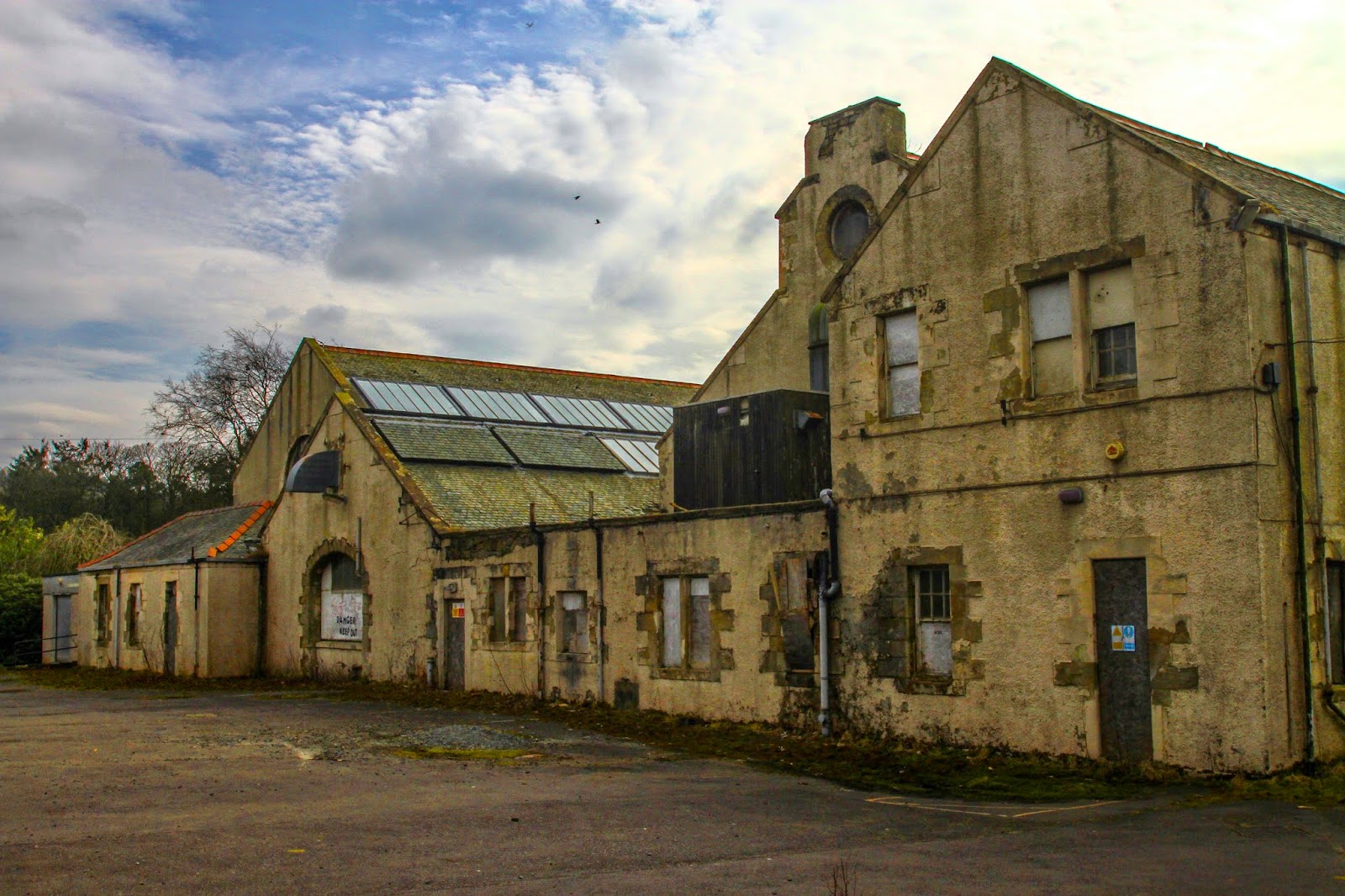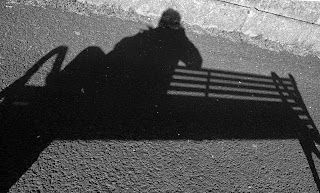FERRY CROSS THE MERSEY-A FEW SNAPS FROM LIVERPOOL
The Bigger Picture
An accessible photography blog
Wednesday 20 January 2016
Monday 22 June 2015
Reflection Photography-an adventure with puddles!
Reflection Photography
Monday 11 May 2015
Self Portraits-how I take a selfie
Self Portraits-My Kinda Selfie!
 | ||||||
| National Museum Of Scotland Last year I did a project on reflection photography. This came about due to a reflection in a puddle I saw every time it rained in the street I work in. This is the kind of stuff that fascinates me, and the way that water or glass can distort an image became a complete obsession. More about those pictures at a later date-the self portraits in today's blog came about as I hunted Edinburgh for reflections for my project. In 2013 the word 'selfie' officially entered the Oxford Dictionary, but photographic self portraits-the act of taking a photo of ones self-have been around for many years. Photographers have been posing for their own cameras since the invention of the photographic process in 1839. Early Self Portraits
Man Ray was a prominent figure in the Dada and Surrealist movement and worked in many media including photography. The picture below was created through a technique called solarization where the print was exposed to a quick flash of light in the darkroom creating the eerie halo effect on the finished image.
Vivian Maier Self Portrait
Maier made use of whatever she had in front of her-windows, mirrors, hubcaps, bowling balls, and would often capture something else in her picture-not just her own image. By day she was a nanny and would trail the streets of Chicago with the children she cared for, taking pictures with her Rolleiflex camera.
A deeply secretive person, most of her work was produced in the 50's where Maier recorded her own urban history. She had an affiliation toward the poor and destitute and struggled to get by herself towards the end of her life. Not able to pay for processing costs, the vast majority of her work was never processed during her lifetime. Vivian passed away still unknown, in a nursing home after having a fall. Back to my own self-portraits.... When looking for a reflection to take a picture in, I try to look at what's going on around me, what other subjects might be included in the photograph, and if I want to make my self obvious in it or not-is the main subject me, or am I just taking a reflected scene that I'm accidentally in. Rainy Day Self Portrait Self portraits don't always have to be a reflection. A shadow can also work depending on what direction the sun is facing, and what other 'props' you may have at your disposal-see Maier's shadow portrait above. Shadow Self Portrait
Shooting self portraits can pose endless opportunities, ranging from ideas you may encounter everyday to those that present themselves when you least expect it
Thinking outside the box is vital-what else do you want to include-is there something else in the frame that should be the main feature? Can you still draw attention to it in a more subtle way such as this Nastia Sokolova shot below.
 Self Portrait
Taking your self portrait with a self-timer can also lead to a great shot and allows you to plan, set up and execute the shot in your own time scale and environment. However, the candid shots are still my favourite. Even if you don't have your camera on you, a camera phone pic will still capture a moment that you may not have again.
Enjoy those selfies!
Tube Self Portrait
Metallic Self Portrait
Find more self portrait inspiration here-http://www.popphoto.com/how-to/2014/03/beyond-selfie-how-photographers-take-self-portraits
|
Tuesday 31 March 2015
Bangour Village Hospital
Bangour Village Hospital-photographing abandoned places
 |
| The Shop |
The History
 The hospital was opened in 1904 as one of the first village -plan psychiatric hospitals in Scotland, an idea that was brought over form Germany. The site included a shop, recreational hall, workshops, cricket pitch and later a church which patients themselves helped to build. Patients were homed in villa style buildings which could accommodate around 30 at a time.
The hospital was opened in 1904 as one of the first village -plan psychiatric hospitals in Scotland, an idea that was brought over form Germany. The site included a shop, recreational hall, workshops, cricket pitch and later a church which patients themselves helped to build. Patients were homed in villa style buildings which could accommodate around 30 at a time. |
| Outside the 'Day Centre' |
The hospital was taken over by the War Office during the First World War and treated the many hundreds of wounded while the mentally ill were displaced to asylums around Scotland. The hospital returned to it's original use between the war years and after 1945. Over it's time, buildings were added to the original site, one of them becoming Bangour General Hospital which offered general services to the whole of West Lothian. A world famous burns unit, plastic surgery unit and maternity ward were also added. I have quite a few friends who were born here.
Taking Pictures
 |
| Lock |
Taking pictures at Bangour does not pose as much of an issue as you may think it would. Although I must stress there is NO access to the buildings-they are in very poor condition and are extremely dangerous. Security patrols the site at all times as there are many who will try and gain access to 'ghost hunt' or steal anything of worth left in the buildings. However, the site is open to the public to walk round freely and on any given Sunday Bangour can be pretty busy with families and dog walkers out for the afternoon.
 |
| Football Pavilion |
Every time I visit Bangour it's overcast. It can
feel like quite a bleak place but is extremely atmospheric. There is not much colour in the buildings and it can be quite difficult to get good contrasts. A grey graduated filter may be useful for some shots, but I choose to shoot mostly in black and white when I'm there. Colour can be nice when you are trying to capture some sort of decay like in the shot above of the lock.
 |
| Church |
A lot of the buildings are white and I found this tricky trying to get the correct exposure to show and detail of wood or brick work. The picture above of the football pavilion was shot at ISO 100, 5.6 app, 1/640 shutter speed. I've brought the contrast and the highlights up every so slightly but apart form that its pretty much straight out the camera-one of my favourite shots of the day. There is something new to be found with every corner you turn or with every new building you encounter.
 |
| One of the villa's |
Walking around Bangour can feel a little creepy. You can often still find objects belonging to one of the wards or even a patient- I have passed the same flattened pram every time I have been. But before our imaginations run away with us it is important to remember that Bangour was a real place which treated thousands of patients through the years with a mixture of therapies and which also gave patients opportunities to work in the grounds, in the various workshops or in the nearby farm. Having had the pleasure of listening to the stories of people who have worked here it seemed to be a happy place that was full of life.
 |
| Villa |
The Future
 |
| Laundry |
 |
| Villa |
 |
| Window |
Click here for an aerial tour- Bangour Aerial Tour
Until next time.....
 |
| Bus Stop |
Sunday 22 March 2015
THE BIGGER PICTURE
THE BIRDS AND THE BEES-WHERE IT ALL BEGAN-SHOOTING WILDLIFE
 | ||||||||||||
| Small Tortoiseshell
To those of you who know me personally-you will be aware that I love animals and am wildlife crazy. From ladybirds to red kites and butterflies to badgers I get over excited about wildlife of any kind. It was this love that first drove me to purchase my first camera, a Canon 550d with a Tamron 70-300mm zoom for shooting what I wanted to shoot most.
I remember being initially disappointed having graduated from a bridge camera with a very strong optical zoom. I was taking pictures of the birds in my garden-but I wanted to be closer. My lens just wouldn't make things BIG enough for me. I remember naively going back to Jessops grumbling about my kit and the assistant assuring me that I could get great results from what I had. I Googled images taken with my kit. The issue it appeared was me.
I think one of the main frustrations when you are new to photography is that you want to know everything yesterday. You want to create perfect images quickly and are baffled as to how others seem to do it so effortlessly. I soon began to realise that it really is trial and error. You can study photography books all day, have ready made tables set out for what settings are best for different situations and drool over lenses you can't really afford but nothing will get you to where you want to be unless you get out there and practice. That said there are some brilliant YouTube tutorials out there that are really informative. I used to (and still sometimes do) take a notebook out with me to write down anything I learnt on an outing, whether it'd be positive or negative. Obviously you can make use of your cameras histogram but I'm a bit of an old fashioned girl and love a bit of pen and paper.
Now, back to the wildlife......
When I started getting into photography about a couple a years ago I was quite determined to do everything 'properly'. Straight out the box I switched my camera onto manual thinking this would be the best way to learn. I kid you not it was quite a while until I realised what aperture and shutter priority were. I only used manual focusing and all the pictures on the blog today are taken completely on manual settings. By no means are these perfect pictures-they are not tac sharp and in some cases lack some detail but they are just a little example of making the most of what you have at your disposal. The Tamron 70-300mm has a good macro function on it if you are into insects or flora. I've also been reading recently that if you mount your bog standard 18-55mm kit lens back to front this can make quite a reasonable macro lens and some of the results I've seen have been great. This is something I've yet to try but will keep you posted!
Another obsession with wildlife photography is to get as close to your subject as possible. This seems like something you should be focusing on but it can be nice to take in the environment of your subject and not make it too detached. Using a wider angle to show the habitat of what you're shooting is also important. A lot of the time the environment you are shooting in can be just as beautiful as the animal you are photographing. Final words of wisdom - be patient. With your subject and with your equipment. We are all limited no matter what kind of kit we have, but try to get to know not just its limits but also its potential. Until next time...... <a href="http://www.bloglovin.com/blog/13886121/?claim=smqvx4anwcq">Follow my blog with Bloglovin</a> |
Subscribe to:
Posts (Atom)
































